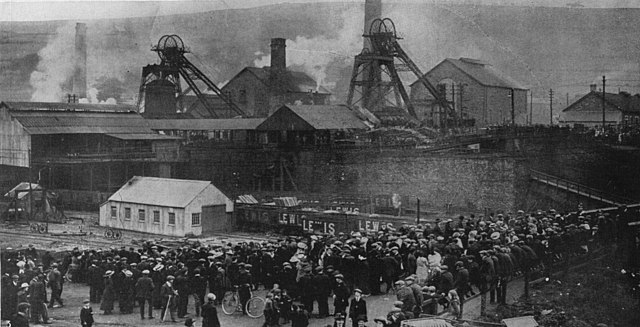The Senghenydd Colliery Disaster, which occurred on October 14, 1913, in Senghenydd, South Wales, is considered the worst mining disaster in the United Kingdom’s history. Here are ways in which the fallen miners of the Senghenydd Colliery Disaster are commemorated and honored:
1. Memorials and Monuments:
- Universal Colliery Memorial Garden: In Senghenydd, a memorial garden was established near the site of the colliery. It features a memorial wall inscribed with the names of the miners who lost their lives. The garden provides a tranquil space for reflection and remembrance.

- Senghenydd War Memorial: The disaster is also commemorated on the Senghenydd War Memorial, which honors those who perished in both World Wars. The names of the miners are inscribed alongside those who served in the armed forces.
2. Annual Commemorative Events:
- Miners’ Memorial Day: Each year, a Miners’ Memorial Day is held to remember the victims of the Senghenydd Colliery Disaster. The community gathers for ceremonies, speeches, and wreath-laying events at the memorial site.
3. Educational Initiatives:
- Local Schools and Community Outreach: Educational initiatives are undertaken to ensure that the younger generations are aware of the history and impact of the disaster. Local schools often engage in projects, and community outreach programs aim to preserve the memory of the fallen miners.
4. Literary and Artistic Works:
- Books and Poetry: Various literary works, including books and poems, have been written to document the Senghenydd Colliery Disaster. These works serve to preserve the memories of the miners and the impact on the community.
- Artistic Representations: Artists may create visual representations, such as paintings or sculptures, to express the emotional and historical significance of the disaster. These works contribute to the cultural remembrance of the event.
5. Community Remembrance Services:
- Church Services: Local churches often hold remembrance services to honor the fallen miners. These services may include prayers, hymns, and moments of silence to reflect on the lives lost.
- Community Gatherings: The community comes together to commemorate the disaster. This may involve not only those directly affected but also individuals from neighboring communities who recognize the shared impact of such events.
6. Preservation of the Disaster Site:
- Heritage Sites: Efforts are made to preserve the colliery site as a heritage site. This may include maintaining structures, creating informational displays, and ensuring that the area remains accessible to those wishing to pay their respects.
7. Collaboration with Mining Organizations:
- Collaboration with Mining Unions: Mining unions and organizations often play a role in commemorating mining disasters. They may organize events, provide support to affected families, and advocate for ongoing improvements in mine safety.
8. Digital Memorials:
- Online Tributes: In the digital age, online platforms may host virtual memorials or forums where individuals can share stories, photographs, and thoughts about the Senghenydd Colliery Disaster. This allows for a broader and more inclusive remembrance.
9. Museum Exhibits:
- Mining Museums: Museums dedicated to mining history may feature exhibits on the Senghenydd Colliery Disaster. These exhibits serve to educate visitors about the historical context, the lives of miners, and the impact of such tragedies.
Commemorating the Senghenydd Colliery Disaster involves a multi-faceted approach, combining physical memorials, annual events, educational initiatives, and community engagement. The goal is to ensure that the memory of the fallen miners is preserved and that lessons are learned to prevent similar tragedies in the future.











